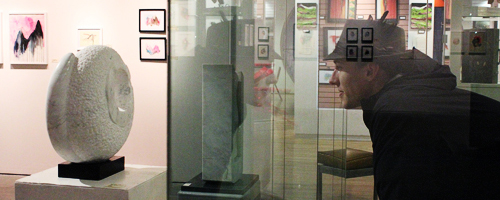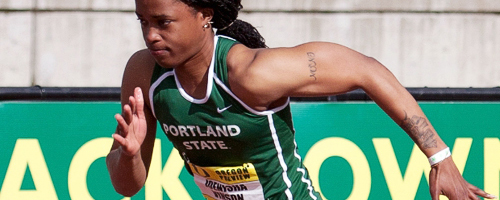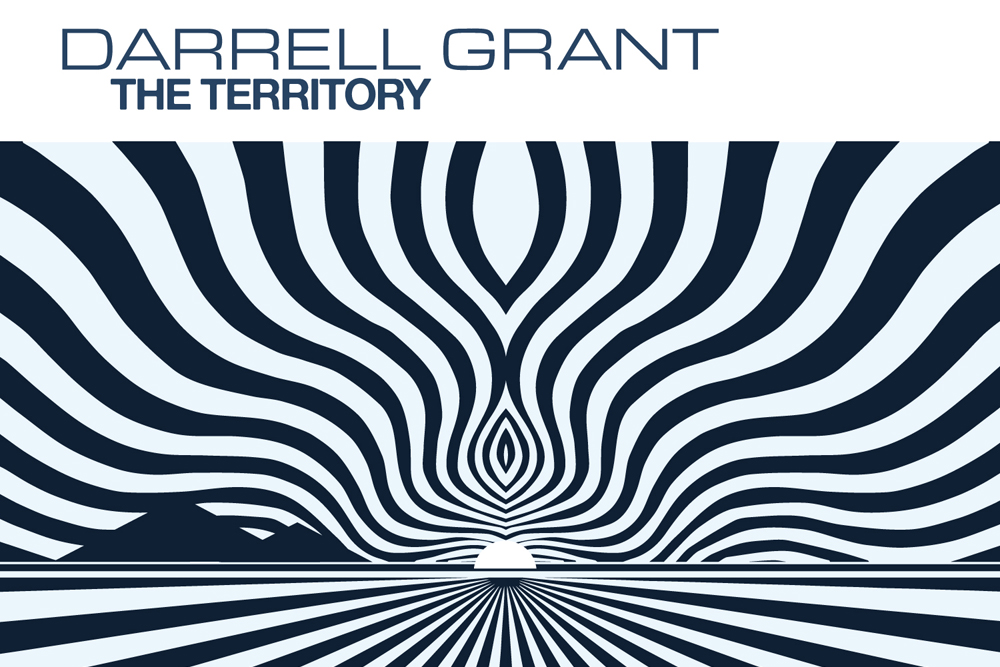A couple of opening words of advice to aspiring visual artists: artists beware. Pursuing a career in the visual arts can be daunting. In an ever-changing field that often seems governed by subjectivity and social whims, it can be difficult to navigate the shifting path to success. And success is a highly dubious word in a world given to constantly evolving trends and a tendency toward self-critique.
How to make it in the art game
[portfolio_slideshow id=45664]
A couple of opening words of advice to aspiring visual artists: artists beware.
Pursuing a career in the visual arts can be daunting. In an ever-changing field that often seems governed by subjectivity and social whims, it can be difficult to navigate the shifting path to success. And success is a highly dubious word in a world given to constantly evolving trends and a tendency toward self-critique.
So what’s an aspiring artist to do? Every artist’s path to fame is different, but a few noted voices in Portland’s art scene have some advice and personal experience to share with students looking to break into the visual art world.
“Develop a cohesive body of work,” said Mark Woolley, owner and director of the Mark
Woolley Gallery located in Pioneer Place. “Focus on thoughtful, insightful content, rather than taking a shotgun, scatter-ball approach.”
Having invested 20 years of his life in the Portland art business, Woolley has seen and shown plenty of artists. His commercial gallery is one of three on the third floor of Pioneer Place’s Atrium building.
Woolley has also operated art spaces in the Pearl District and Northeast Portland, and was involved with the initial development of the Wonder Ballroom, a prominent Portland venue.
“What dealers don’t respond to is when people submit six completely different things, rather than a consistent body of work,” he said.
Portland-based painter and radio host Eva Lake echoed Woolley’s advice.
“Find your voice,” she said. “I think there is a lot out there keeping us from it. Be yourself times 10.”
In addition to a history of shows throughout Portland and Oregon, Lake has shown work in San Francisco, New York and abroad. She also hosts the KBOO program Art Focus, for which she interviews an array of artists, gallerists, curators and more.
“The key is having that story no one else can tell,” she said. “That can take decades to find and develop. In fact, I’d say you shouldn’t be in a rush to come to conclusions about who you are. Just don’t let anyone else tell you!”
Of course, there is always the networking side of the business. Artists might dread the thought of social engagement with the art world, but as both Lake and Woolley pointed out, art can’t be seen in a social vacuum.
“If you want someone to be interested in you, be interested in them,” Lake said. “Go to openings, engage, ask questions. Art is a conversation. Galleries want to know who you are, not just what you make.”
Woolley made the same point from the gallery owner’s perspective. He underscored the importance of being knowledgeable and involved with the galleries and openings, and having the ability to talk thoughtfully about one’s own work—and to engage with the work of others.
“Go out and see what’s being shown, and educate yourself about the galleries you’re approaching,” he said. “People [who] only focus on their work and don’t educate themselves about what’s going on, and the venues involved in showing, are really selling
themselves short.”
Woolley also noted that a history of showing can be important, and acknowledged that it can be difficult to get started. But he pointed to such institutions as Portland’s Regional Arts and Culture Council as great resources for an artist looking to get started with group shows.
Lake, who has made it her business to engage with the art world not only as an artist but as a radio host and writer, suggested that innovation and working with others were also key.
“Show your friends, create your own scene, hang a show in your studio or living room,” she said. “Write the press release, the whole nine yards. Help someone else. Create a situation in which your hand isn’t out, but is the one that is helping. Karma works.”
Woolley also wants to see innovation in the work itself, and in particular the thinking behind the work. He noted that most gallery directors and curators will look for an artist’s awareness of his or her content.
“Being able to talk about your own work is usually helpful, whether directly or through a good artist’s statement,” he said. “As a dealer, I’m always interested in what people are trying to say through their work. Whether the work was engaging and well-crafted—these are things I would look at.”
But perhaps most importantly, Woolley suggested all aspiring artists be persistent. He noted that he’s often worked with artists after spending a good deal of time watching their development and seeing their growth.
“Be patient!” he said. “Keep refining what you’re doing, and feel free to take your time with it. Don’t try to shove the work along or force it too quickly.”






